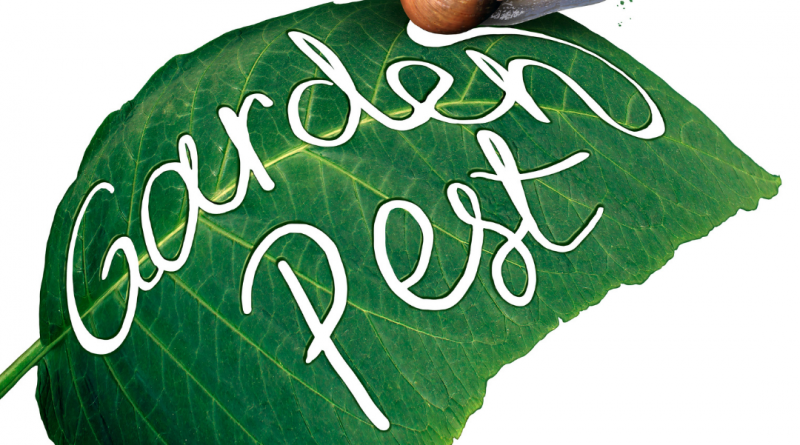How to identify Common Garden Pests and Diseases like a pro
What’s happening to my plants? There is no joy in finding your plants with tiny creatures, wrinkled leaves, leaves dropping or discolouring. Pests and diseases can destroy our plants which is discouraging and costly. This article offers a strategy for identifying and controlling insects pests and diseases frequently found in home gardens and houseplants.
First things first. Before we talk about identifying pesky pests and ravaging diseases, it would be wise to start by discussing prevention. As the old adage goes, prevention is better than cure. Some plants are naturally prone to insects, and others know how to fight back. Here are 5 tips on preventing pests and diseases.
If you have done everything to ensure your plants are growing in the right conditions, then you are off to a good start. However, the growing environment also contributes to plant health and exposure to pests and diseases. Not all creatures around your plants or garden are harmful. And likewise, not all changes mean that your plants are sick.
Here is a list of insect pests and diseases frequently found in plants and gardens.
PESTS
Aphids
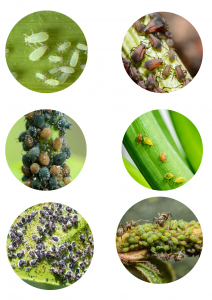
Aphids are small, soft-bodied insects that may be green, grey, yellow, brown, red or black. They feed on the plant sap and are often found in clusters on new growth.
Aphids are usually wingless however, they can develop a winged form to travel to other plants when populations are high and there is competition for food. There are many species of aphids that attack most plants however some species attack specific plants. For example, cabbage aphids, bean aphids and potato aphids.
How to identify aphids
Aphids are small insects but can be easily detected. They are small insects with pear-like bodies and often hang out in groups.
How to tell your plants are under aphid attack
Aphid nymphs and adults feed on plant sap. So one of the first signs you will notice is your leaves appear misshapen, curled or yellowing. If you notice this, check the underside of the leaves as Aphids love to live under the spotlight.
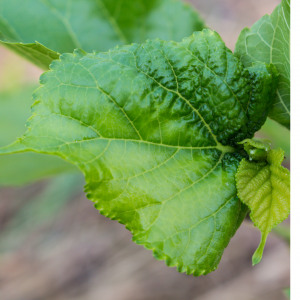
Another sign your plants are under aphid attack is the leaves or stems are covered with a sticky substance. This substance is a sugary liquid called honeydew which is produced from insects waste.
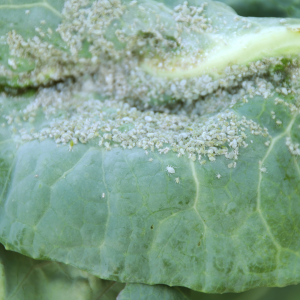
Ants on your plants: Ants love the honeydew, however Aphids are not the only insects that produce sugary liquid. So when you see ants, they could be a sign of aphids or other insects.
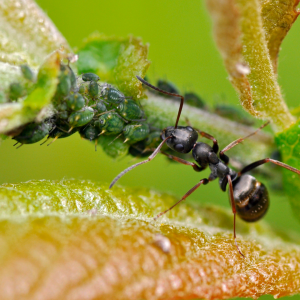
The honeydew can sometimes encourage a fungal growth called sooty mold, causing branches and leaves to appear black.
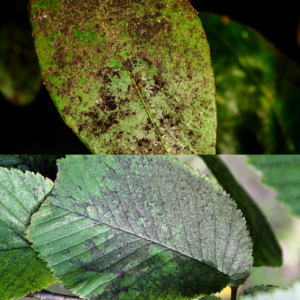
How to control and get rid of aphids
- Spray cold water on the leaves. This is effective when the aphids are detected early. The water blast can dislodge the aphids.
- Organic Neem oil, insecticidal soaps, and horticultural oils are effective controls against aphids.
- If you have a few plants you can wipe or spray the leaves of the plant with a mild solution of water and a few drops of dish soap. This should be repeated every 2 – 3 days until the situation is under control.
Whiteflies
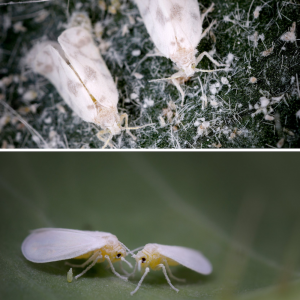
These white-winged sap-sucking insects that look like tiny moths are common on indoor, ornamental and vegetable plants. They are often found in thick crowds under leaves, stems and near tops of infested plants. Whiteflies are easy to detect as they fly when you touch the plants. Both nymphs and adults damage plants by sucking the juices from new growth causing stunted growth, leaf yellowing and reduced yields. Plants become weak and susceptible to disease. Like aphids, whiteflies secrete honeydew, so leaves may be sticky or covered with a black sooty mold. They are also responsible for transmitting several plant viruses.
How to tell your plants are under whitefly attack
Whiteflies are flying insects. So when you brush our plants and you see small white-winged insects flying, then those are whiteflies. They are easily recognized and often found near the tops of plants or on stem ends. Wingless nymphs are flattened, oval and almost scale-like in appearance.
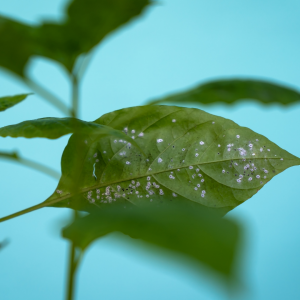
The honeydew also attracts ants so ants on your plants would be an indicator of whiteflies or aphids.
How to control and get rid of whiteflies
Whitefly control is similar to aphids.
- Organic Neem oil, insecticidal soaps, and horticultural oils are effective controls against aphids.
- If you have a few plants you can wipe or spray the leaves of the plant with a mild solution of water and a few drops of dish soap. This should be repeated every 2 – 3 days until the situation is under control.
Thrips
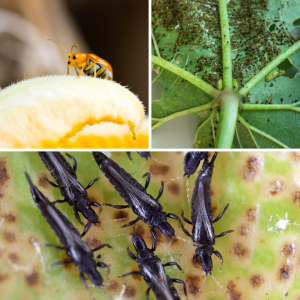
Thrips are elongated, slender insects. Most thrips range in colour from white, yellow, dark brown or black. Adult thrips have wings while their larvae lack wings. Thrips attack fruits, flowers and leaves of plants and suck the plant juices causing damage. They feed in large groups and leap or fly away when disturbed.
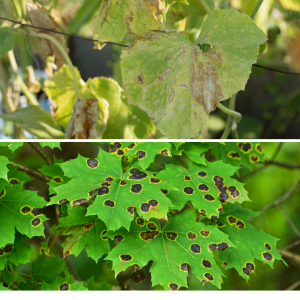
A common insect found in indoor and outdoor gardens, thrips damage plants by sucking their juices. Plant leaves may turn pale, splotchy, and silvery, then die. Injured plants are twisted, discoloured and scarred.
How to control and get rid of thrips
Thrips are controlled in a similar fashion as whiteflies and aphids
- Organic Neem oil, insecticidal soaps, and horticultural oils are effective controls against aphids.
- If you have a few plants you can wipe or spray the leaves of the plant with a mild solution of water and a few drops of dish soap. This should be repeated every 2 – 3 days until the situation is under control.
Scale Insects and Mealy Bugs
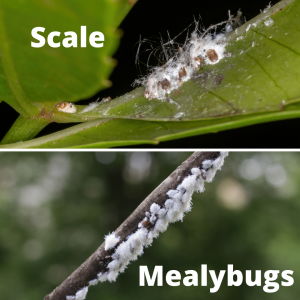
Scale insects are tiny sap-sucking insects that look like small bumps on a plant that stick to the stem, leaves and fruits and feed off the host plant. They are named so because of the scale or shell-like waxy covering that covers their body. Scale insects can vary in shape from flat to almost spherical and they are usually immobile pests.
Scale insects and mealybugs are grouped together by entomologists because they have similar habits and life cycles.
How to tell your plants are under scale or mealybug attack
These insects have sucking mouthparts made up of threadlike stylets that act like a straw. This enables them to draw out liquids from the plant’s vascular tissue or cells. Your plants as such undergo a slow decline which can be mistaken for lack of nutrients or water. It is important to look at your plant leaves and stems closely for “bump looking” spots.
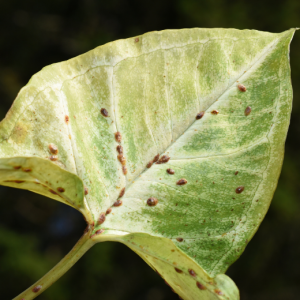
Mealybugs feed on the phloem and produce honeydew that can cause sooty mold. Sugar loving ants tend to protect mealybugs from enemies, and they may even move them to new plants for the benefit of their honeydew. Scale and mealy bug infested plant leaves turn yellow and may drop from the plant. If they are not controlled, they could kill the plant.
How to control scale and mealybugs
Predatory insects, mites, spiders, and pathogenic fungi are known to effectively attack scale insects. Ideally, if you notice any of these, then you should protect them at all costs as they are natural enemies with good intentions. In the absence of natural predators, organic neem oil when applied thoroughly once a week can help control the insects.
Spider Mites
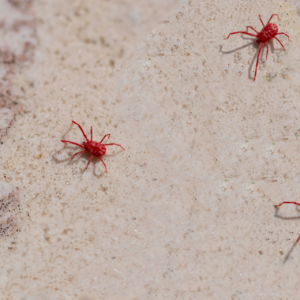
These are very tiny reddish-brown or pale, oval insects that live in colonies mostly on the underside of leaves. Since they are very small, their population can build up unnoticed. When the infestation is severe, these pests create a fine webbing around the plant and the pests. They attack both indoor and outdoor plants. Spider mites are common in hot and dry conditions.
How to tell your plants are under Spider Mite attack
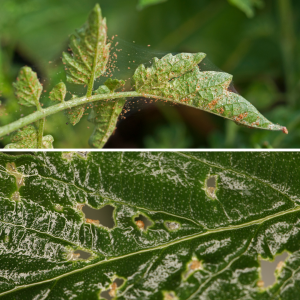
Yellow, brownish, or white spots on the leaves of your plant.
Very small white or red spots on the leaves that move (these are the spider mites themselves). If you come into contact with them, they have a sharp bite.
White, cottony webbing appears on the underside of the leaves.
How to control Spider Mites
Controlling or getting rid of spider mites is not easy, but using the same tactics (insecticidal soap and organic neem oil) as the other insects can help. It is important to put sick plants away from others to avoid spreading.
DISEASES
Powdery Mildew
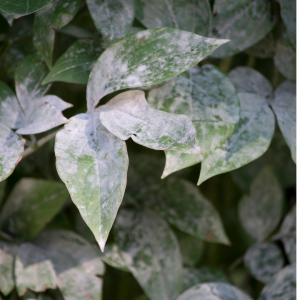
Powdery Mildew is a fungal disease that affects many plants. It usually appears as a white powdery layer on leaves, buds, flowers and fruits. Powdery mildew is most severe in crowded and shady locations with high humidity. Mildew can spread from one plant to another through gardening tools and equipment.
Downy Mildew
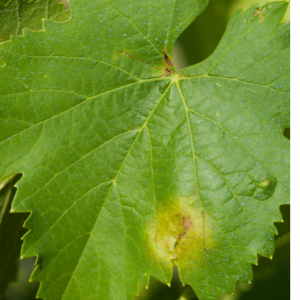
Downey Mildew is also a fungal disease that appears as yellow to white patches on the upper surface of leaves. On the underside, these areas are covered with white to greyish cotton-like fungi. This disease occurs in cool and moist conditions. The disease can be spread by insects, wind, rain or garden tools.
Black Sooty Mold

Sooty mold is usually a black powdery coating that develops on the leaves and stems of plants. Sometimes the black layer may be hard and stick tightly to the leaf. These fungi grow on honeydew, a sticky sugary substance produced by sap-sucking pests as they feed. Although the mold does not attack the plant directly, it affects the plants by covering the leaves and thus reducing photosynthesis.
Early Blight
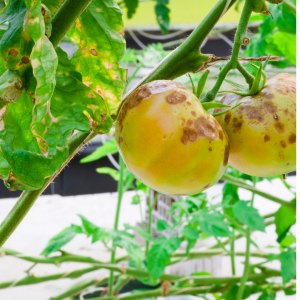
The first signs of early blight appear as small, circular or irregular dark brown to black spots with concentric rings that form a ‘bulls’ eye’ pattern on the lower leaves. As the disease progresses it spreads outward on the leaf surface causing it to turn yellow, wither and die. This disease is common in tomato and potato plants. This fungal disease can remain in the soil and can be spread by splashing rain, irrigation, insects and garden tools. Wet and humid conditions accompanied by high temperatures promote its rapid spread. Symptoms of early blight can occur on the foliage, fruit and stem at any stage of development.
Late Blight
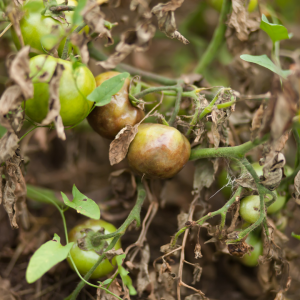
Just like early blight, late blight is also a fungal disease. However, each disease is caused by a different type of fungus. Late blight is also very common on tomatoes and potatoes. The first symptoms are irregularly shaped, water-soaked lesions often with a lighter ring around them. These lesions are typically found on the younger leaves in the top portion of the plant. During high humidity, white cottony growth may be visible on both sides of the leaves. Spots are visible on both sides of the leaves. As the disease matures lesions enlarge causing leaves to brown, shrivel and die.
Rust
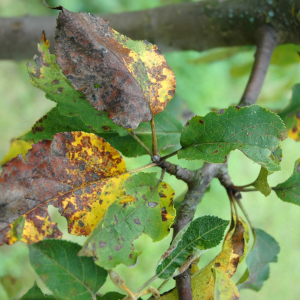
Leaf rust is a fungal disease that attacks garden plants in wet and humid conditions. As the name suggests, leaf rust looks similar to the kind of rust we get on metals. The first signs of rust are white or reddish to orange blister-like swellings on the underside of leaves and stems. Orange or yellow spots or streaks appear on the undersides of the leaves. The symptoms appear primarily on the surfaces of lower leaves. This disease leads to leaf distortion and defoliation.
Anthracnose
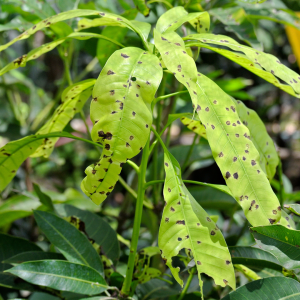
This fungal disease affects many plants including vegetables, fruits and trees. It first appears as small, irregular yellow or brown spots. Infected plants develop dark, sunken lesions on stems, leaves or fruit as the disease progresses. The centres of these lesions often become covered with pink masses of spores especially during moist, warm weather.
Leaf spot
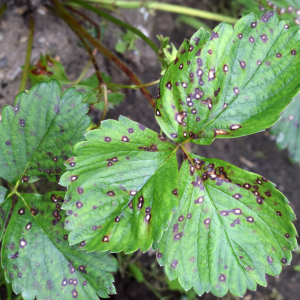
Leaf spot can either be caused by fungi or bacteria. Both types of leaf spot are similar in appearance and effect. The infected plants have brown or black spots on the foliage sometimes with a yellow ring. The spots are usually uniform in size but they enlarge and run together as the disease progresses. Leaf spot diseases usually first appear on the lower and inner branches where humidity is higher and leaves are shaded. Both types of leaf spot are most active in moist and warm locations.
Wilt
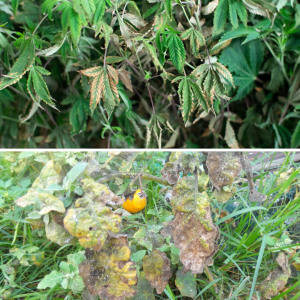
Wilt refers to several diseases which affect the water-conducting vessels of the plant. The fungi enter the plant from the soil through the roots and as the infection spreads up into the stems and leaves it restricts water flow causing the leaves to wilt and turn yellow. The disease symptoms are first noticed on the lower leaves, which eventually die and fall. Diseased plants may die soon after infection.
Mosaic virus
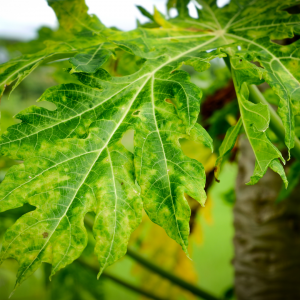
There are many types of viruses that affect plants but the most common viral disease in plants is the mosaic virus. There are different strains of mosaic viruses. These viruses affect a wide variety of horticultural and vegetable crops. Infected plant leaves have intermingled patches of light green or yellowish colours. The leaves are spotted with yellow, white and light or dark green spots which appear elevated giving the leaves a blister-like appearance. The plants are often stunted and they grow poorly. Plants may have other deformities and their leaves may be wrinkled or wavy.
Identification is the first step towards treating and elimination. There are numerous case studies on the internet on how to effectively deal with the common garden pests and diseases. We recommend that you try organic solutions in as much as is possible especially at household level. This will ensure your safety and those in the home, and always apply the solutions to a small area before applying to the whole plant as not all plants will react the same to the solutions and treatments.

